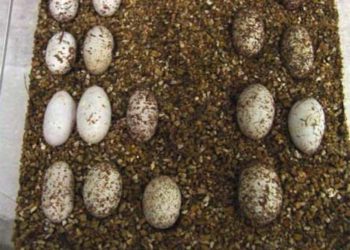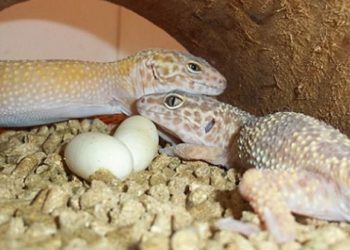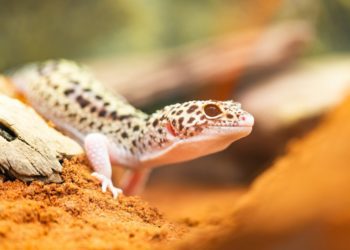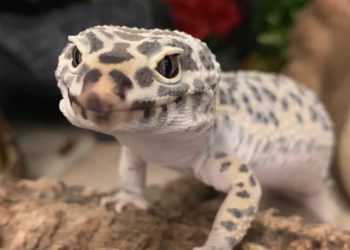Leopard geckos are one of the most cute and adorable creatures which can be kept as pets without much hassle. You can own one but you must know all the gestures and illnesses of leopard geckos so it does not confuses you when you get that creature in your house.
Contents
Reasons Why Is my Leopard Gecko Turning Brown?
This is a troublesome situation for the leopard gecko owners when they find that their adorable pet reptile is turning darker in shade. There can be different reasons for this situation. You may find the gecko getting ill or it can be in some stressful situation.
However, if the gecko turns pale instead of going dark, then you should not be bothered. This is a natural phase of every gecko’s life cycle. When they are about to shed, their body color goes a shade or two paler. But it becomes normal when it grows the new skin.
As we have already professed there are several reasons behind the gecko growing brown or dark in shade. We will discuss them according to the commonness and priority.
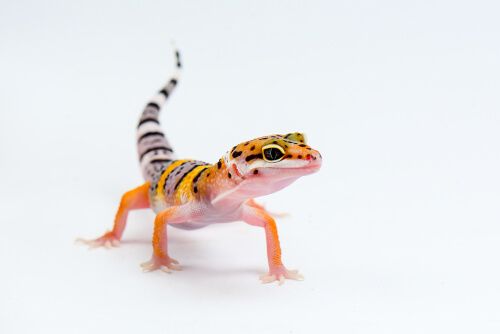
Too cold atmosphere
Turning cold is the foremost reason of growing brown for the leopard geckos. This is the defensive mechanism of leopard gecko, as when they turn brown, they can absorb the most heat from the atmosphere.
When you see the gecko changing its color to a darker shade check the temperature of the enclosure to ensure it is getting enough heat. You can use a digital thermometer to keep the temperature in check.
The ideal temperature for the enclosure of the leopard gecko should be 28 to 32 degree Celsius in night and during day it could be less but not less than 21 degree. For this purpose make sure you have good Leopard Gecko Terrarium.
Keeping the temperature gradient inside the vivarium is advised. The cooler side and the warmer side will help the gecko to live in the favored spot whenever it feels the need to be hotter or cooler.
Another great point for keeping the gecko warm is, keeping a warm hideout place around the basking area. It can be hidden to avoid the sharp light but can enjoy the heat from the place. This is particularly needed when the gecko feels sleepy.
The beautiful colored creature gets the boon of warm coloration from the heat, so when you keep it heated and well fed, it will be showering you with the joy of viewing a naturally vibrant pet at home.
It is the time for shedding
Though we have earlier mentioned that turning a shade lighter is the usual symptom of shedding time, it also can get a shade darker for the same reason. The shedding process takes place quite frequently among the leopard geckos. So you should see this change of color once in four weeks.
After the shedding process is completed, the gecko will take a week to get back to its normal color. But if the coloration does not change after the new skin has appeared, then the change of color can be symptom to some other ailment.
Color or pattern changing
Changing the body color or pattern is seen among few leopard geckos, when they age. Also it is a normal incident for the geckos and it happens once in a year or 18 months. There are gecko morphs that tend to change the pattern as well as shade of their body.
If you own a carrot tail, yellow or orange morphs then you can witness such phenomenon. Sometimes the marks on their body loose it shape or gets vanished completely within the time period of 1 to 3 years.
Sometimes you will see the stripes and spots are getting darker and not the whole body is getting dark. You can be assured that it is not going to affect the health of the gecko as it is only a sign of getting mature.

Mood swing or stress
This is a rather important cause of color changing in the leopard geckos which should not be ignored. You can give the gecko some time to see the color change keeps progressing. Also you can check if the other reasons mentioned above are the cause of the browning. But if the temperature is regular and the gecko is a fully matured one which is not in due for shedding, then the color changing can be the result of it getting stressed.
There are various reasons that can affect the mood of a leopard gecko. There are elements in atmosphere and surrounding which can upset them. The wrong temperature, too much or too little light, disturbance during the sleep due to the heat emitter bulbs can cause them to be disturbed.
Unlike human and some four-legged pets, they cannot express their annoyance shouting or howling. Their uneasiness is shown through the change in their body color. So try to use a lightless heat emitter like the ceramic ones for the night time.
Leopard geckos are quite aware of the colors of light. So you should not put some harsh colored bulbs like the red, blue or white ones which sting their eye sight and make them uncomfortable.
Keeping the lights on at night is actually pretty disturbing for the geckos. So you can use a heating pad for the night time or other options which will keep the tank warm but will not make the geckos uncomfortable. Heating pads are available in different sizes so you will be able to find the right sized one for the vivarium of your pets.
There can be another reason of their stressing and that is related to its owner. If you handle it too much, it will get stressed real soon. As for reptiles, they love the company of their humans, but not on regular basis and not for too long. If you have brought the leopard gecko for the first time you may not be aware of this fact, but you must learn to handle it with care and leave it to enjoy the free space.
Unmanageable substrate
Loose substrate makes the risk of impaction high so it is better not to use that kind of thing inside the enclosure of leopard gecko. Coco fiber, dark sand or such dark colored substrate can make your gecko look brownish, and that can also be caused due to the higher amount of moisture present in these substrates.
Get a good and Best Leopard Gecko Substrates
Among other options, sphagnum moss is one such substrate that increases the level of humidity in the terrarium. Only if you are keeping a separate box for the shedding time, can you use this substrate there.
Calcium deficiency
A sign of calcium deficiency is dark coloration. As to say, you should not feed the gecko with too much calcium, as that can cause toxicity in their body. But this is a very important mineral for the geckos.
Do not feed them calcium powder with every meal, rather you can keep a separate small bowl of calcium powder, which the gecko can lick from, when the feel the need of having calcium in their system. Also do not make the mistake of feeding vitamin D3 with calcium like you can do with other reptiles. Feeding D3 is not needed for good health of geckos. Read this guide for feeding your gecko.
Conclusion
The factors that bother most of the geckos and their owners are detailed here. If you are not sure of the reasons of disturbance of the gecko, check all the points mentioned above and avoid any disturbing situation that may make the gecko ill. These basic rules should be followed by the pet owners to keep the leopard gecko healthy and happy.



